Spain, a country known for its vibrant culture, stunning landscapes, and innovative spirit, offers a public transport system that is as diverse and rich as its heritage. From the bustling streets of Madrid and Barcelona to the sun-kissed beaches of Malaga, public transport in Spain is more than just a means of travel; it’s a window into the nation’s soul.
This comprehensive guide provides an in-depth look at public transport in Spain, including its differences with other world public transports, variations between different Spanish zones, availability, discounts, and more. Whether you’re a seasoned traveler or a first-time visitor, this guide equips you with the knowledge to explore Spain with ease and confidence.
Table of Contents
- Renfe: Spain’s Premier Train Network
- Spain’s Air Travel: Soaring Above Expectations
- Coach Buses in Spain: Comfort on the Road
- Renting a Car in Spain: Freedom on Four Wheels
- Metro Systems in Spain: Urban Travel Redefined
- Taxis and Ride-Sharing in Spain: Navigating the Streets with Ease
- Scooter Rentals in Spain: A Thrilling Way to Explore
- Transportation to and from Major Airports in Spain: Your Gateway to Exploration
- Spain’s Commitment to Sustainability: Leading the Way in Green Travel
- Comparing Spain’s Public Transport System: A Model of Innovation and Inclusion
- Spain’s Public Transport System: A Reflection of Diversity and Culture
- Availability and Discounts: Convenience at Your Fingertips


Carolina Ferro
Carolina Ferro is a seasoned travel writer with a passion for exploring the diverse landscapes of Spain. She has dedicated herself to uncovering the intricacies of Spain’s public transport system.
Renfe: Spain’s Premier Train Network
Renfe, Spain’s pride in rail transportation, stands out for its blend of top-notch engineering and exceptional customer service. It’s not just about getting from one place to another; it’s about experiencing the journey in the best way possible.
AVE: The Gold Standard of Train Travel
The AVE high-speed trains are a testament to luxury and efficiency. Linking major hubs like Madrid, Barcelona, and Malaga, they whisk passengers across vast distances in a mere 2 hours and 40 minutes, all for a reasonable price of €50. But it’s not just about speed. Onboard, passengers are treated to plush amenities and panoramic views of Spain’s ever-changing landscapes, making every journey memorable.
If you want to learn more about AVE, check this blog: AVE: The Gold Standard for European High-speed Train Revolution
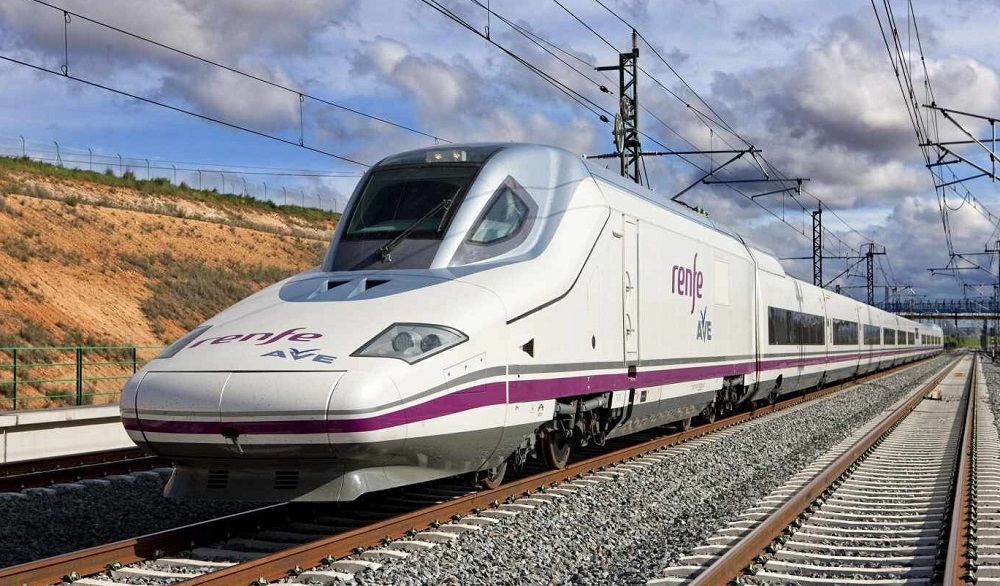

Regional Trains: Dive into Spain’s Soul
For those looking to immerse themselves in Spain’s rich tapestry of cultures and landscapes, Renfe’s regional trains are the ticket. They meander through smaller towns and varied terrains, from the verdant meadows of Galicia to the dramatic terrains of Andalusia. It’s a slower, more intimate way to discover the heart of Spain.
Booking with Renfe: Smart Choices, Great Savings
To get the best out of Renfe, a little planning goes a long way. Early bookings often come with attractive discounts, making travel more affordable. The online platform is user-friendly, offering a range of packages to cater to different needs – whether you’re traveling with family, or you’re a student on a budget. It’s all about making train travel accessible and enjoyable for everyone.
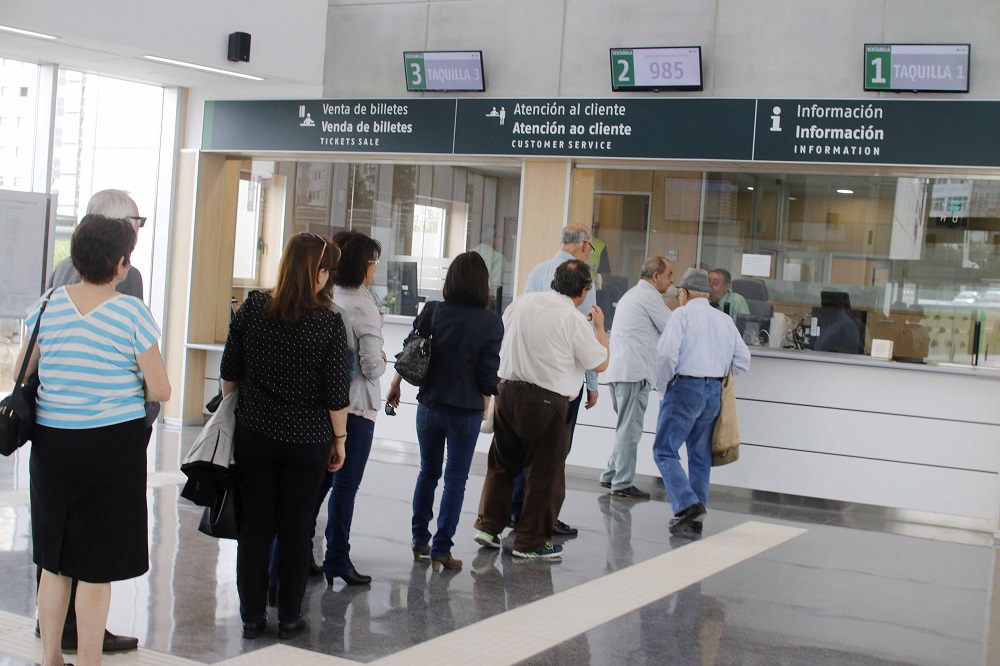

Inclusivity on the Rails
At its core, Renfe believes in making travel seamless for everyone, regardless of their physical abilities. The trains are thoughtfully designed with features like elevators and ramps to assist those with mobility challenges. Specialized services further ensure that every passenger’s journey is comfortable. It’s a shining example of Spain’s dedication to inclusiveness and hospitality.
Spain’s Air Travel: Soaring Above Expectations
Spain’s air travel network is as diverse as it is efficient. With over 40 airports and a multitude of airlines, flying within Spain is not only convenient but also caters to various budgets and preferences.
Learn Spanish at Vamos Academy, the Best Language Academy!!!
Study Spanish in Malaga
Enjoy the beaches in Malaga, while you improve your Spanish in Malaga
- Great teachers
- Wonderful experience
- Well-located in Malaga
- The future of Spain
Study Spanish in Buenos Aires
Try delicious empanadas in Buenos Aires, while you improve your Spanish in Buenos Aires
- Wonderful streets
- Delicious dishes
- The best place from Argentina
Study Spanish Online
You can learn Spanish online anywhere at anytime with us
- Anywhere, anytime
- Fantastic learning experiences
- Comprehensive explanations
- Always available
Major Airports: Your Gateway to Spain and Beyond
Spain’s major airports are more than just transit points; they are bustling hubs that connect travelers to both domestic and international destinations.
- Madrid’s Barajas: A modern marvel, this airport is known for its architectural beauty and seamless connectivity.
- Barcelona’s El Prat: A blend of efficiency and style, El Prat offers a warm welcome to Catalonia’s vibrant capital.
- Malaga’s Costa del Sol: A gateway to the sunny southern coast, this airport reflects the charm of Andalusia.
With top-notch facilities and a plethora of services, these airports make travel a pleasure.
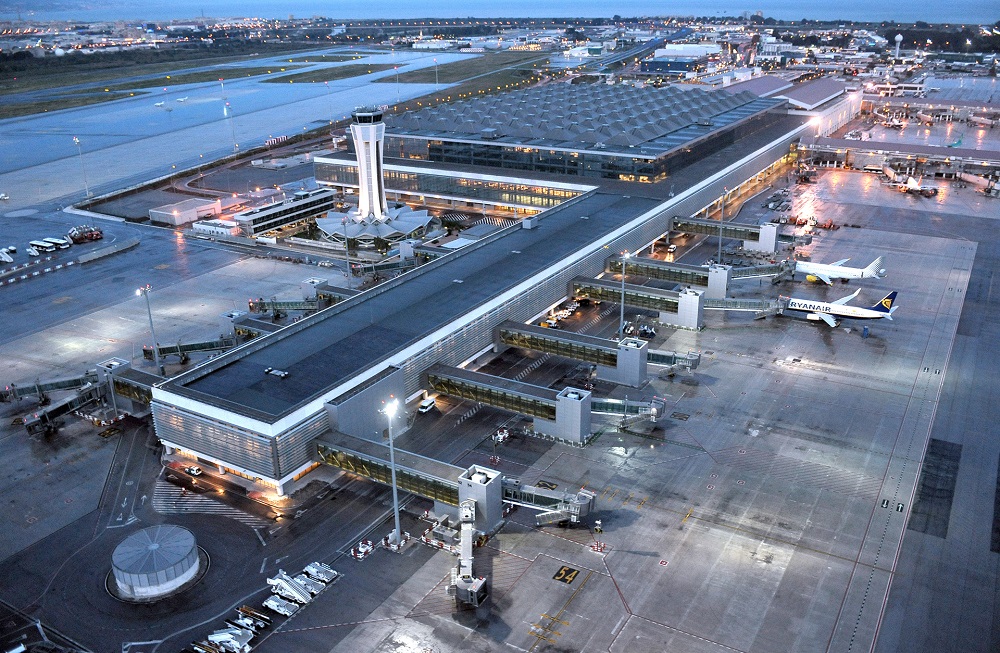

Regional Airports: The Heart of Local Spain
Spain’s regional airports are the unsung heroes of its air network. They provide vital links to less-explored parts of the country, each with its unique flavor.
- Santiago de Compostela’s Airport: A historic touchpoint for pilgrims and travelers alike.
- Ibiza’s Airport: Your entry to the party capital of the world.
These smaller airports add depth and accessibility to Spain’s diverse regions.
Airlines: A Flight for Every Fancy
From budget-friendly to luxury, Spain’s airlines have something for everyone.
- Low-Cost Options: Airlines like Vueling, Air Europa, and Ryanair make travel affordable without compromising on quality.
- Premium Experience: Iberia, Spain’s flagship carrier, offers top-tier services for those seeking a touch of luxury.
Whether you’re a backpacker or a business traveler, Spain’s airlines meet your needs with grace.


Booking Your Flight: Easy, Efficient, Economical
Booking a flight in Spain is as easy as a click. By comparing prices online and planning ahead, you can snag great deals. Many travel packages even bundle flights, accommodation, and transportation, taking the stress out of planning. Real-time updates and exclusive online deals further simplify the process, making air travel in Spain a breeze.
Coach Buses in Spain: Comfort on the Road
In Spain, traveling by coach bus is more than just a means to get from point A to point B. It’s a comfortable and affordable way to explore the country’s diverse landscapes and cultures. With companies like ALSA leading the way, bus travel in Spain is a popular choice for locals and tourists alike.
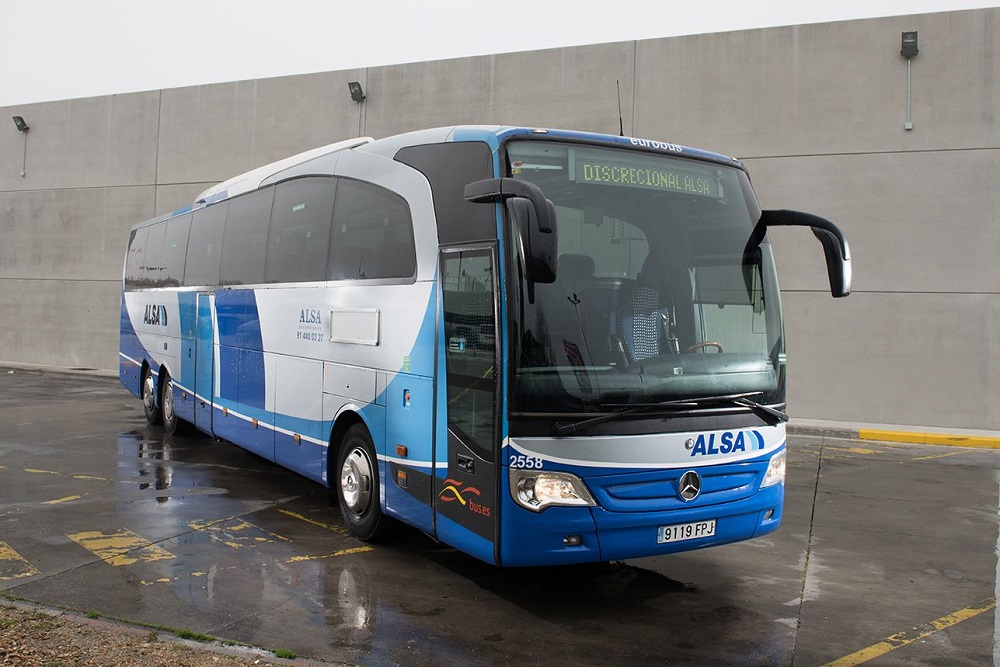

Comfort and Amenities: A Journey to Remember
Spanish coach buses are designed with the traveler’s comfort in mind. Here’s what you can expect:
- Wi-Fi: Stay connected on the go with onboard Wi-Fi, perfect for sharing your travel experiences or catching up on emails.
- Reclining Seats: Sit back and relax in plush seats that recline, allowing you to rest during longer journeys.
- Onboard Entertainment: From movies to music, entertainment options keep the journey enjoyable.
- Panoramic Windows and Onboard Cafes: Enjoy the scenic views through large windows and savor a coffee or snack from the onboard cafe.
These amenities transform bus travel into a delightful experience, making it a preferred option for many.
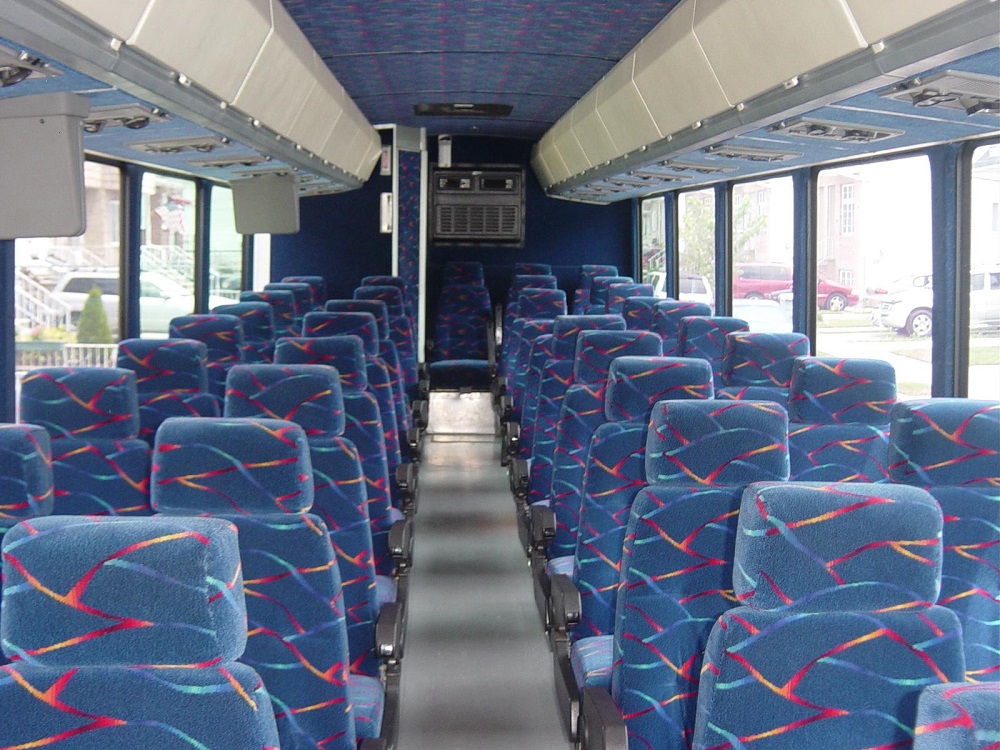

Regional Connections: Explore the Unexplored
Coach buses play a crucial role in connecting parts of Spain that might be off the beaten path. Whether it’s a remote village in the mountains or a hidden beach along the coast, buses bridge the gap.
- Rural Connections: Experience the authentic charm of Spain’s countryside, accessible by well-planned bus routes.
- Coastal Adventures: Discover coastal towns and hidden beaches that might not be reachable by other means.
These connections open doors to unique travel experiences, allowing you to explore Spain’s hidden gems.
Pricing: Travel Smart, Save More
One of the standout features of coach bus travel in Spain is its affordability. But it’s not just about low costs; it’s about value.
- Student and Senior Discounts: Special fares for different age groups make travel budget-friendly.
- Frequent Traveler Benefits: Regular travelers can take advantage of loyalty programs and save more.
- Online Booking Convenience: Booking online is easy and often comes with exclusive discounts and offers.
With a range of pricing options and the convenience of online booking, coach bus travel in Spain is an attractive choice for budget-conscious explorers.
Renting a Car in Spain: Freedom on Four Wheels
Renting a car in Spain opens up a world of possibilities. Whether you’re cruising along the sun-kissed Costa Brava or winding through the mountainous roads of Andalusia, a rental car gives you the freedom to explore Spain’s diverse beauty at your leisure.
If you want more detailed information about car renting in Spain, check this blog: Car Renting in Spain: All You Need to Know
Car Rental Companies: Finding Your Perfect Ride
Spain’s car rental market is rich with options, catering to every traveler’s needs and budget.
- International Brands: Trusted names like Hertz, Avis, and Europcar offer a wide range of vehicles, from compact cars for city driving to luxury SUVs for a more comfortable journey.
- Local Providers: Alongside international giants, local rental companies provide personalized services and unique options that reflect Spain’s character.
With so many choices, you’re sure to find the perfect car for your Spanish adventure.


Driving in Spain: Know Before You Go
Driving in Spain is a pleasure, thanks to well-maintained roads and stunning scenery. But it’s essential to be aware of some key points:
- International Driver’s Permit: Non-EU citizens will need this permit, so be sure to obtain one before your trip.
- Traffic Rules: Familiarize yourself with local traffic laws, including speed limits and parking regulations, to ensure a smooth journey.
- Toll Payments: Many of Spain’s highways are toll roads. Payments can be made with cash or credit card, so keep some change handy.
Understanding these aspects will make your driving experience in Spain enjoyable and stress-free.
Scenic Routes: Spain’s Roads Less Traveled
One of the joys of renting a car in Spain is the opportunity to explore off the beaten path. Here are some routes to consider:
- Costa Brava Coastline: Drive along the rugged coast, with its hidden coves and charming fishing villages. Don’t miss the medieval town of Tossa de Mar.
- Andalusian Mountains: Experience the dramatic landscapes of southern Spain, dotted with white-washed villages and rich Moorish history.
- Wine Country Exploration: Visit the renowned wine regions like La Rioja, where you can tour vineyards and enjoy wine tastings.
These scenic drives offer a unique perspective on Spain’s diverse landscapes and cultural heritage.


Metro Systems in Spain: Urban Travel Redefined
In Spain’s bustling cities, the metro systems stand as a testament to modernity, efficiency, and inclusivity. Serving millions of passengers daily, they are a vital part of urban life in cities like Madrid, Barcelona, Malaga, Seville, and Valencia.
Madrid Metro: The Heartbeat of the Capital
Madrid’s metro system is a marvel of urban transportation. Here’s what sets it apart:
- Extensive Network: With 12 lines and over 300 stations, it’s one of Europe’s largest metro systems.
- Tourist-Friendly: It connects key attractions like the Royal Palace, Prado Museum, and Retiro Park.
- Business and Residential Reach: Whether you’re heading to a business meeting or returning home, the metro has you covered.
The Madrid Metro is more than just a transport system; it’s a symbol of the city’s vibrancy and connectivity.
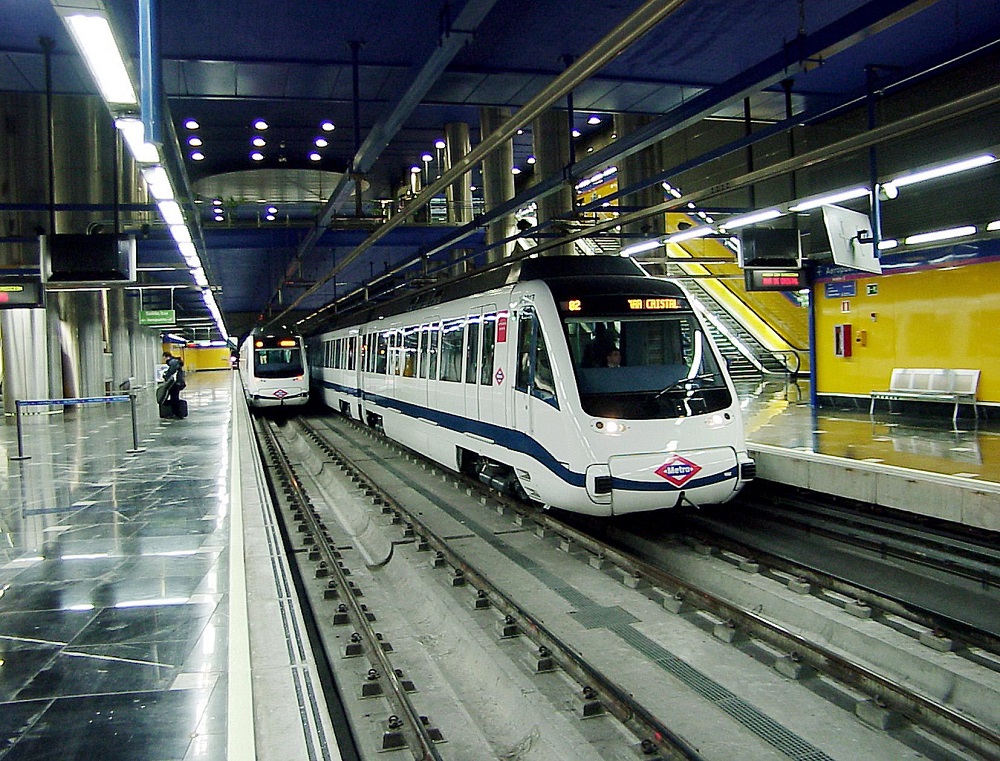

Barcelona Metro: Where Art Meets Function
Barcelona’s metro is a unique blend of efficiency and aesthetics. Here’s why it’s special:
- Artistic Flair: Many stations are adorned with art, reflecting Barcelona’s rich cultural heritage.
- Architectural Exploration: From Gaudi’s Sagrada Familia to the bustling La Rambla, the metro puts the city’s wonders at your fingertips.
- Timely Service: Known for its punctuality, it’s a reliable way to navigate the city.
The Barcelona Metro is not just a means of transport; it’s a journey through the city’s soul.
Malaga Metro: A Symbol of Growth
Malaga’s metro system may be relatively new, but it’s quickly become a vital part of the city’s infrastructure.
- Modern Design: Sleek and efficient, it reflects Malaga’s growth as a contemporary urban center.
- Strategic Connections: From the airport to the university, it links essential parts of the city.
- Tourist Accessibility: It’s a convenient way to explore Malaga’s museums, beaches, and historic sites.
The Malaga Metro is a testament to the city’s progress and ambition.
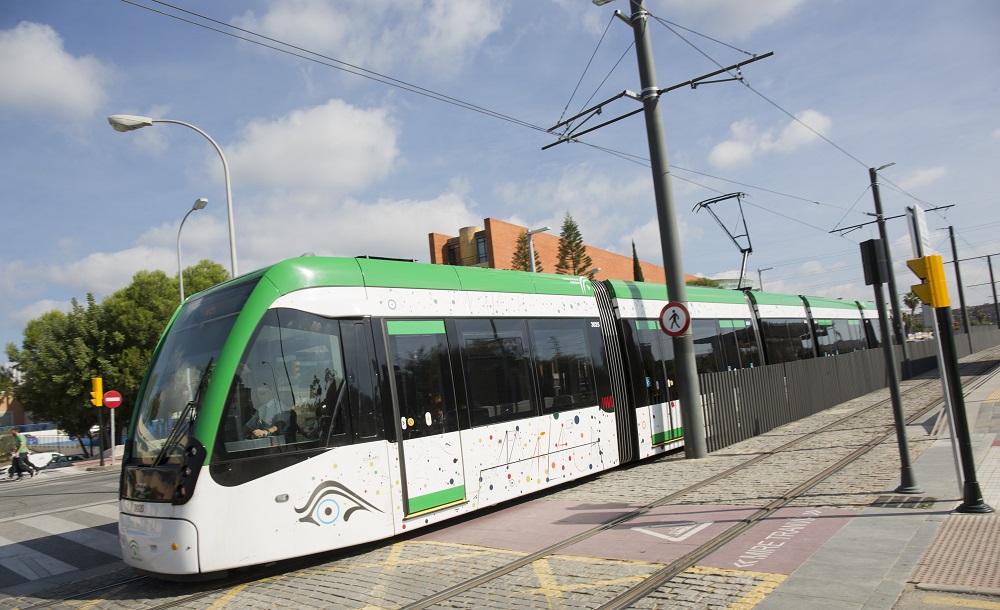

Accessibility: Travel for All
Spain’s commitment to inclusivity shines through in its metro systems:
- Elevators and Ramps: These features ensure that everyone, including those with mobility challenges, can use the metro with ease.
- Visual Aids: Signage and visual cues guide passengers, making navigation simple.
- Customer Service: Staff are trained to assist passengers with special needs, ensuring a smooth journey.
Taxis and Ride-Sharing in Spain: Navigating the Streets with Ease
In Spain’s bustling cities and tranquil towns, taxis and ride-sharing services offer convenient and reliable transportation options. Whether you’re in a hurry to catch a flight or exploring the city at leisure, these services have you covered.
Taxi Services: The Classic Choice
Taxis in Spain are more than just a mode of transport; they’re a symbol of trust and convenience.
- Regulated and Reliable: All taxis are metered and adhere to government regulations, ensuring fair pricing.
- Widely Available: Whether you’re in Madrid’s city center or a small village in Andalusia, taxis are easy to find.
- Versatile Options: Need a ride to the airport at dawn? Or a quick lift to a nearby restaurant? Taxis are there for you.
- Booking Apps: Platforms like MyTaxi make booking and payment a breeze, adding to the convenience.
Taxis in Spain are not just a service; they’re a tradition of comfort and reliability.
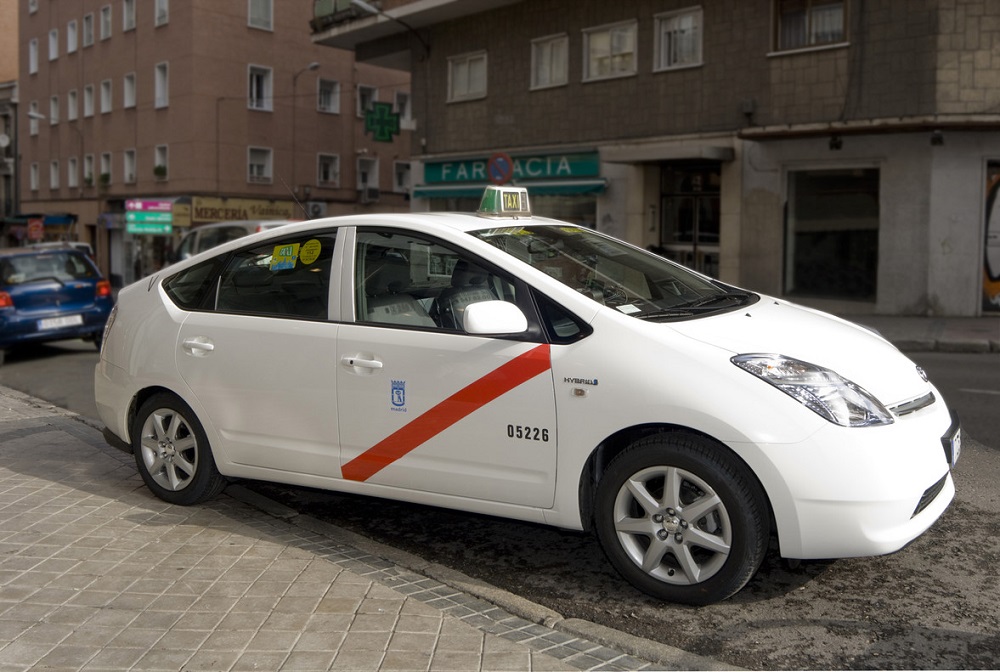

Ride-Sharing: The New Wave
Ride-sharing services like Uber are reshaping urban travel in Spain. Here’s what makes them appealing:
- Modern and Tech-Savvy: With just a few taps on your smartphone, your ride is on its way.
- Flexible Pricing: Dynamic pricing models offer competitive rates, especially during non-peak hours.
- Localized Experience: Some drivers offer insights into local culture and must-visit spots, enhancing your journey.
- Note on Regulations: While popular in cities like Madrid and Malaga, Uber is banned in Barcelona. Awareness of local rules is essential.
Ride-sharing in Spain is more than a trend; it’s a reflection of the country’s embrace of innovation and modernity.
Safety and Comfort: Non-Negotiables
Whether you choose a traditional taxi or a ride-sharing service, Spain ensures that your ride is safe and comfortable:
- Vehicle Standards: Regular inspections and adherence to safety norms are mandatory.
- Professional Drivers: Courteous and knowledgeable, drivers are trained to provide a smooth ride.
- Customer Feedback: Online reviews and ratings guide you to the best service providers.
- Transparent Billing: Clear and transparent billing practices eliminate surprises.


Scooter Rentals in Spain: A Thrilling Way to Explore
Spain’s vibrant cities and picturesque landscapes offer a unique charm that’s best explored on two wheels. Scooter rentals have become a popular choice for both locals and tourists, providing a thrilling and flexible way to discover the country’s hidden treasures.
Explore with Ease: Freedom on Wheels
Scooter rentals are more than just a mode of transport; they’re an adventure waiting to unfold.
- City Adventures: From the bustling streets of Madrid to the coastal roads of Malaga, scooters offer a unique perspective of urban life.
- App-Based Services: Companies like Lime and Bird have made renting a scooter as easy as a few taps on your phone. Pick up and drop off at convenient locations.
- Eco-Friendly Options: Electric scooters are gaining popularity, aligning with Spain’s commitment to sustainability and clean energy.
Scooters in Spain are not just a ride; they’re an invitation to explore, experience, and enjoy.


Safety Regulations: Your Well-being Matters
While scooters offer an exciting way to explore, safety is paramount.
- Helmets are a Must: No matter how short the ride, helmets are mandatory. Safety first!
- Designated Lanes: Stick to the lanes marked for scooters. It’s not just the law; it’s for your safety.
- Caution with Drivers: Some roads may have aggressive drivers. Awareness and caution can ensure a smooth ride.
- License Requirements: An international driver’s license and prior experience are typically required. Make sure to check with the rental company for specific rules.
Environmental Impact: Ride Green
Electric scooters are not just fun; they’re a statement of responsible travel.
- Low Emissions: Electric scooters contribute to reducing air pollution in urban areas.
- Noise-Free Travel: Enjoy a quiet ride through Spain’s historic streets without the noise of a traditional engine.
- Tourist-Friendly: Many tourist areas like Malaga’s beachfront have embraced scooters as an eco-friendly way to explore.


Transportation to and from Major Airports in Spain: Your Gateway to Exploration
Spain’s major airports are not just points of arrival and departure; they are the gateways to a rich and diverse cultural experience. Whether you’re landing in the bustling capital of Madrid or the sun-kissed shores of Malaga, the transportation options are designed for convenience and comfort.
Madrid’s Barajas Airport: A Global Hub of Connectivity
Madrid’s Barajas Airport is more than an airport; it’s a symbol of Spain’s global reach.
- Metro Connection: Line 8 connects the airport to the city center, offering a quick and affordable way to start your Madrid adventure.
- Express Buses: For those with extra luggage, express buses provide a comfortable ride with ample space.
- Taxi Services: Available 24/7, taxis offer a personalized journey to your destination.
- Amenities and Services: From shopping to dining, Barajas Airport offers a world-class experience.
Whether you’re a business traveler or a tourist, Madrid’s Barajas Airport is designed to welcome you with open arms.
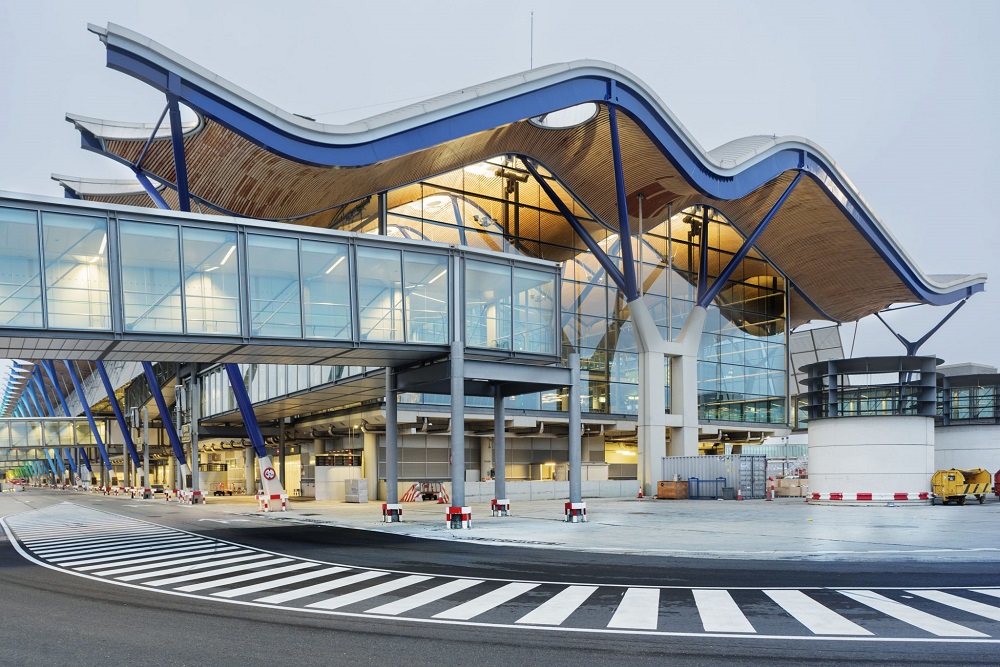

Barcelona’s El Prat Airport: The Heart of Catalonia
Barcelona’s El Prat Airport is a gateway to the artistic and cultural soul of Catalonia.
- Aerobus: A dedicated airport bus service that connects you to the vibrant streets of Barcelona.
- Local Buses and RENFE Train: Multiple options for those who prefer a local touch.
- Rich Cultural Access: From the airport, you’re just a short ride away from Gaudi’s masterpieces and the lively Catalan festivals.
Barcelona’s El Prat Airport is not just a transportation hub; it’s the first chapter of your Catalan story.
Malaga’s Costa del Sol Airport: A Gateway to Sun and Sea
Malaga’s Costa del Sol Airport is where your beach vacation begins.
- Train Connection: A convenient train service that takes you to the heart of Costa del Sol’s beach resorts.
- Bus and Taxi Options: Whether you prefer the local bus or a private taxi, the choice is yours.
- Tourist-Friendly Services: Information centers, car rentals, and more to make your beach holiday perfect.
Malaga’s Costa del Sol Airport is more than an airport; it’s the starting point of your sun-soaked Spanish dream.
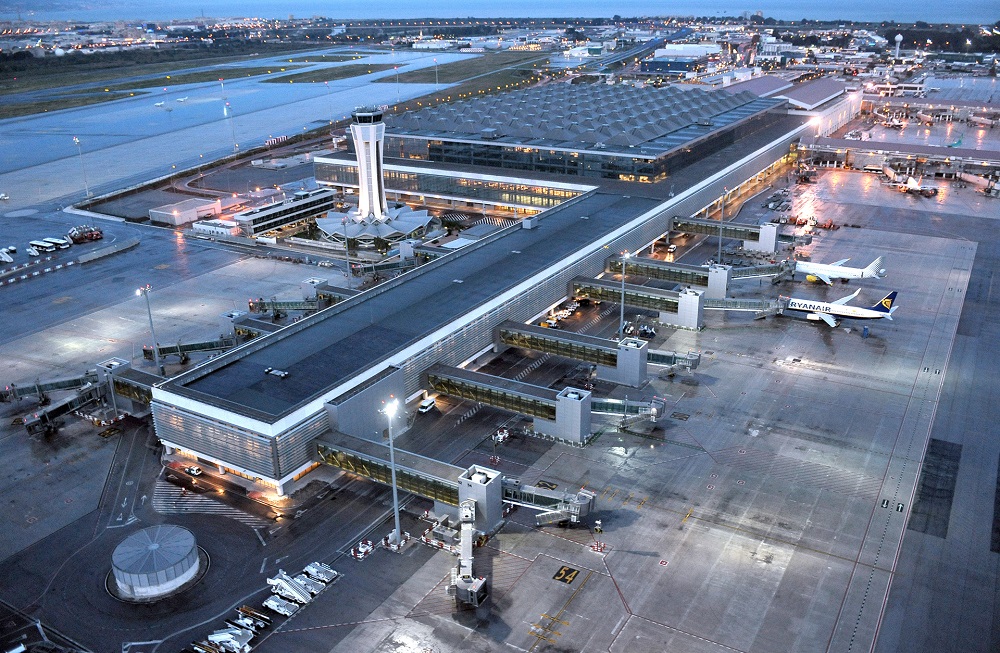

Valencia’s Airport: Innovation and Tradition Combined
Valencia’s Airport is a reflection of the city itself – a blend of futuristic innovation and rich tradition.
- Metro Connectivity: Well-connected by metro, the airport offers a smooth transition to Valencia’s architectural wonders.
- Bus Services: Local buses provide a window into Valencia’s daily life.
- Access to Arts and Culture: From the airport, you’re just a ride away from the City of Arts and Sciences and the historic Silk Exchange.
Valencia’s Airport is not just a transportation hub; it’s an invitation to explore a city where the future meets the past.
Spain’s Commitment to Sustainability: Leading the Way in Green Travel
Spain’s commitment to sustainability is evident in its public transportation system. From high-speed trains to eco-friendly buses, the country is at the forefront of green travel, setting an example for others to follow.
High-Speed Trains (AVE): Efficiency Meets Innovation
Spain’s AVE trains are not just a symbol of efficiency; they are a testament to the country’s environmental consciousness. By offering a fast and reliable alternative to air travel, they play a crucial role in reducing greenhouse gas emissions and promoting sustainable tourism.
- Energy Efficiency: AVE trains are designed with cutting-edge technology to consume less energy. Advanced aerodynamics, regenerative braking systems, and energy-efficient engines make them a green choice for travel.
- Sustainable Infrastructure: Train stations and rail networks are built with sustainability in mind. Renewable energy sources, such as solar panels, are integrated into the design, and eco-friendly materials are used in construction.
- Promoting Green Travel: By providing a luxurious yet eco-friendly travel option, AVE trains encourage travelers to choose rail over air, aligning with global efforts to reduce carbon footprints.
Eco-Friendly Buses: Pioneering Green Travel
Spain’s bus companies, like ALSA, are pioneering green travel by investing in eco-friendly buses that run on alternative fuels.
- Alternative Fuels: Buses running on natural gas, electricity, or hydrogen are becoming more common in Spain. These alternative fuels reduce emissions and set a precedent for cleaner transportation options.
- Green Initiatives: Many cities are implementing green bus lanes, charging infrastructure, and incentives to support the transition to cleaner buses. These initiatives reflect Spain’s commitment to a greener future.
- Comfort and Convenience: Eco-friendly buses offer the same comfort and amenities as traditional buses, making green travel an attractive option for all.
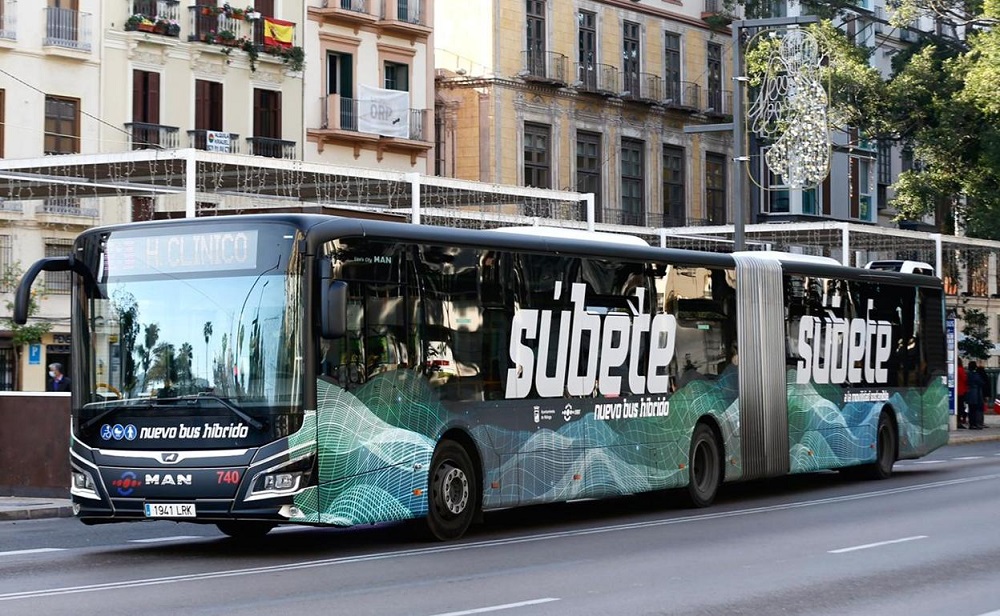

Urban Metro Systems: Clean and Conscious
Spain’s urban metro systems in cities like Madrid, Barcelona, Malaga, Seville, and Valencia are known for their cleanliness, reliability, and efficiency.
- Modern Technology: Investments in energy-efficient lighting, ventilation systems, and smart technology contribute to sustainability. These innovations reduce energy consumption and enhance passenger experience.
- Public Awareness: Cities are engaging with the public to promote responsible travel behavior. Campaigns encourage off-peak travel, waste reduction, and the use of reusable containers, fostering a culture of environmental stewardship.
Bike and Scooter Rentals: Eco-Friendly Urban Exploration
Spain’s major cities are encouraging eco-friendly urban exploration through bike and scooter rentals.
- Bike-Sharing Programs: Cities like Malaga have implemented bike-sharing programs, providing residents and tourists with a healthy and environmentally friendly way to explore. These programs are often integrated with public transportation, offering a seamless travel experience.
- Sustainable Urban Planning: Bike lanes, pedestrian-friendly areas, and traffic calming measures are being developed to support non-motorized transportation options. These initiatives enhance urban livability and reduce pollution.
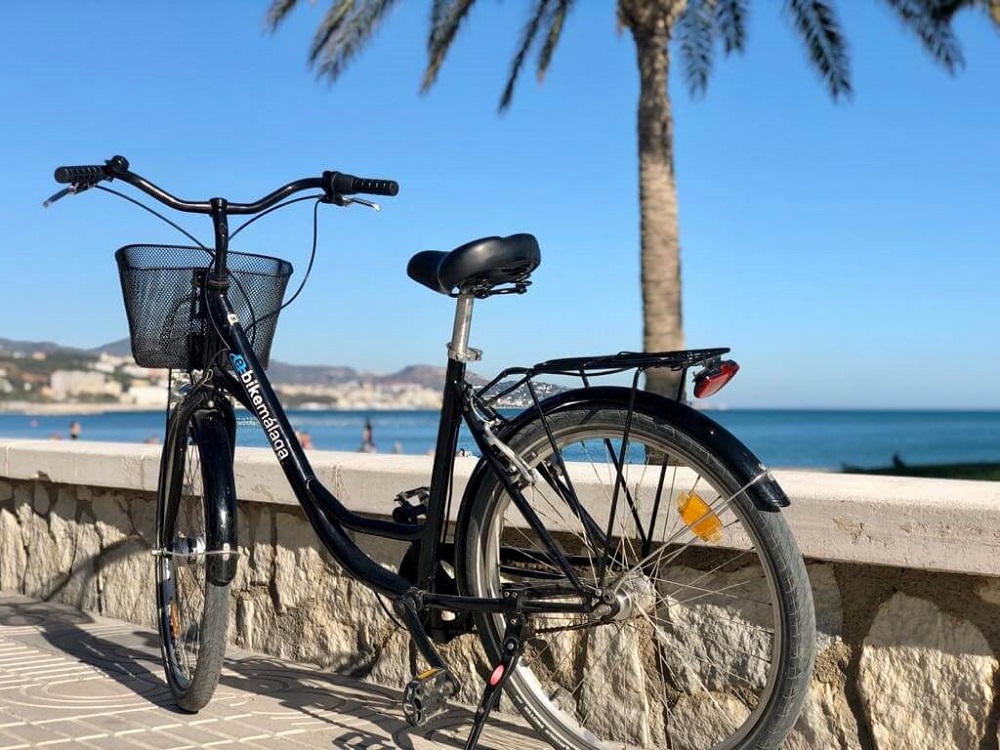

Comparing Spain’s Public Transport System: A Model of Innovation and Inclusion
Spain’s public transport system is a marvel that sets it apart on the global stage. From its world-renowned high-speed rail network to its commitment to social inclusion, Spain’s transportation landscape offers insights and lessons for other nations.
High-Speed Rail Network: A Global Leader
Spain’s high-speed rail network, known as AVE, is one of the largest and most advanced in the world. It offers a viable and eco-friendly alternative to domestic flights, connecting major cities in record time.
- Global Comparison: Spain’s AVE network ranks among the top in the world, alongside countries like Japan and France. Its success serves as a model for other nations looking to invest in high-speed rail, showcasing the potential for efficiency, sustainability, and economic growth.
- Economic Impact: The development of high-speed rail has had a transformative economic impact on regions like Andalusia. By boosting tourism, creating jobs, and stimulating local businesses, the AVE network has become a catalyst for regional development.
Integration of Various Modes: Seamless Travel
Spain’s seamless integration of trains, buses, metros, and taxis provides a cohesive and convenient travel experience.
- Multimodal Transportation Hubs: Cities like Madrid, Barcelona, and Malaga have developed state-of-the-art transportation hubs that facilitate easy transfers between different modes of transport. These hubs are designed with passenger comfort in mind, offering amenities and real-time information.
- Smart Ticketing: Integrated ticketing systems allow passengers to use a single ticket for multiple modes of transport. This innovation enhances convenience and efficiency, making travel within and between cities a breeze.
Affordability and Accessibility: Inclusive Travel
Spain’s public transport is celebrated for its affordability and accessibility, even in remote areas.
- Social Inclusion: Spain’s commitment to social inclusion is reflected in its efforts to make public transport accessible to all. From discounted fares for seniors and students to facilities for passengers with disabilities, Spain’s transport system embodies inclusivity.
- Rural Connectivity: Investments in rural transportation networks ensure that even remote areas are connected. This connectivity fosters economic development and social cohesion, bridging the urban-rural divide.


Regulatory Challenges: Balancing Innovation and Safety
Spain’s regulatory landscape reflects a unique approach to managing and controlling transportation services.
- Balancing Innovation and Regulation: Spain faces the challenge of balancing innovation with regulation. The ban on Uber in Barcelona, for example, highlights the tension between embracing new transportation models and ensuring they align with public interests and safety standards.
- Local Autonomy: Different regions and cities in Spain have the autonomy to implement their own transportation policies. This decentralization leads to variations in regulations and services, allowing for localized solutions and responsiveness to community needs.
Spain’s Public Transport System: A Reflection of Diversity and Culture
Spain’s public transport system is as diverse and vibrant as the country itself. From the bustling urban centers to the tranquil rural landscapes, the transportation network offers a rich tapestry of experiences that cater to the unique geography and cultural heritage of each region.
Urban vs. Rural Transport: A Tale of Two Worlds
Spain’s urban and rural areas present contrasting transportation landscapes, each with its own set of challenges and innovations.
- Urban Innovation: Cities like Madrid, Barcelona, and Malaga are hubs of urban innovation. Extensive metro systems, smart buses, and autonomous vehicles are transforming urban mobility, making travel within the city efficient and enjoyable.
- Rural Accessibility: In contrast, rural areas rely more on buses and regional trains. Well-connected networks ensure that even remote villages are accessible, preserving the connection between urban and rural communities.
Regional Variations: Culture and Geography
Spain’s diverse regions offer unique transportation options that reflect local culture and geography.
- Cultural Influence: Regional transportation often tells a story of local heritage. The historic tram system in Soller, Mallorca, for example, offers a nostalgic journey through time, connecting passengers with the region’s rich history.
- Geographical Considerations: Spain’s varied landscapes influence transportation choices. The Canary Islands rely on ferries to connect the islands, while the Pyrenees offer cable cars for mountain access. These region-specific solutions showcase the adaptability and creativity of Spain’s transport system.
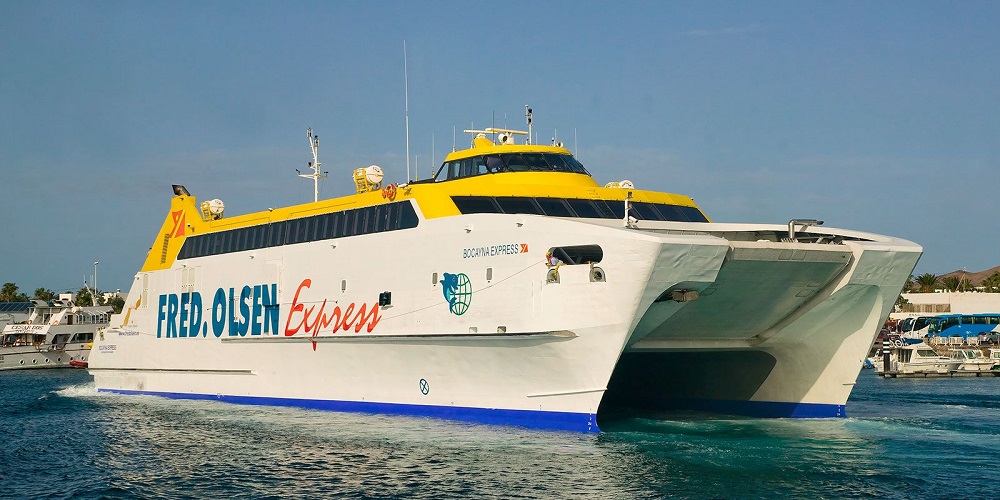

Availability and Discounts: Convenience at Your Fingertips
Spain’s public transport system is designed to be widely available and convenient, with a focus on affordability and accessibility. From major cities to small towns, the network offers a range of options that cater to diverse travel needs.
Pricing and Discounts: Affordable Exploration
Spain’s public transport system is designed to be affordable and accessible, with pricing and discounts varying between regions and cities.
- Tourist Passes: Major cities like Madrid, Barcelona, and Malaga offer tourist passes that provide unlimited travel on public transport. These passes often come with additional benefits like museum discounts, making them a popular choice for visitors.
- Local Subsidies: Some regions offer subsidized fares for residents, reflecting a commitment to keeping public transport affordable for local communities. These subsidies can make a significant difference in daily life, especially in economically disadvantaged areas.
- Seasonal Variations: Prices may vary by season, with discounts offered during off-peak times. These incentives encourage travel and tourism, supporting local economies and promoting exploration.


Availability Across Spain: A Network of Convenience
Spain’s public transport is accessible across the country, connecting urban centers with rural landscapes.
- Urban Accessibility: Major cities like Madrid, Barcelona, and Malaga boast extensive metro and bus networks, ensuring that every corner of the city is within reach.
- Rural Connections: Rural areas benefit from regional trains and bus services that connect small towns and villages, preserving the cultural fabric of the countryside.
- Special Services: Night buses, airport shuttles, and other specialized services enhance the overall experience, providing tailored solutions for specific travel needs.
Discounts and Passes: Travel Smart
Spain’s public transport offers various discounts and passes that make travel affordable for different segments of the population.
- Student and Senior Discounts: Special rates are available for students and seniors, reflecting a commitment to inclusivity and social welfare.
- Tourist Passes: Multi-journey passes like bonometros and city-specific tourist cards offer cost savings and flexibility, making them popular choices for visitors.
- Seasonal Offers: Seasonal discounts and off-peak rates encourage travel during less busy times, supporting local tourism and reducing congestion.


Experience Spain with Local Help: Authentic Connections
Navigating Spain’s public transportation system can be complex, especially for non-Spanish speakers. Local assistance provides valuable insights and authentic connections.
- Tourist Information Centers: Strategically located in cities like Madrid, Barcelona, and Malaga, these centers provide guidance on public transport options, routes, and discounts. Friendly staff offer personalized assistance, ensuring a smooth travel experience.
- Local Guides and Community Engagement: Engaging with local guides and participating in community events offers a deeper understanding of Spain’s diverse regions. From personalized tours to local festivals, these connections enrich the travel experience and provide a window into Spanish life.
Embrace the journey and explore the beauty of Spain, from the bustling streets of Madrid and Barcelona to the sun-kissed beaches of Malaga. Spain’s public transport system offers a window into its rich culture, stunning landscapes, and innovative spirit. Whether you’re a seasoned traveler or a first-time visitor, this comprehensive guide equips you with the knowledge to travel with ease and confidence. Experience Spain’s “Popular Transportation” like never before, and let “Public Transport” be your gateway to the wonders of “Spain.”







